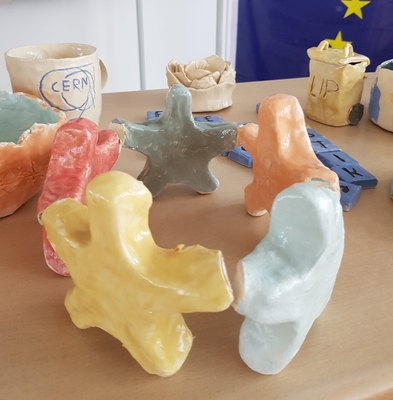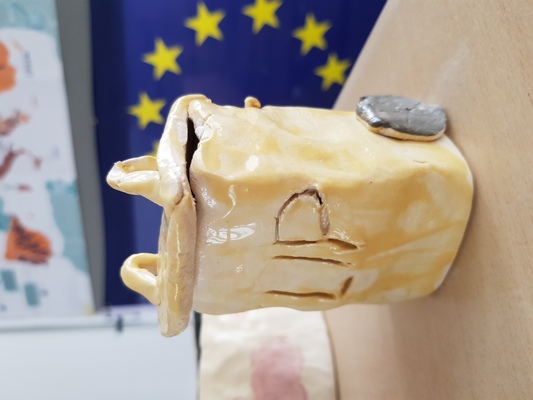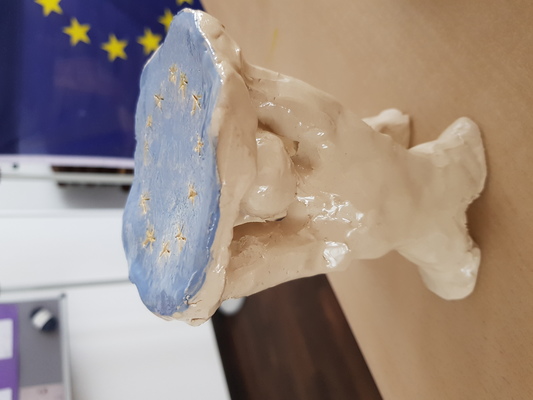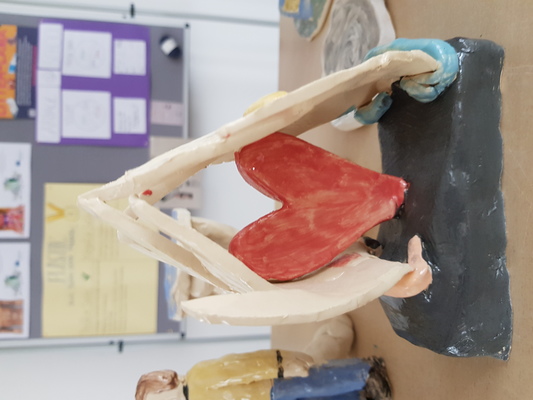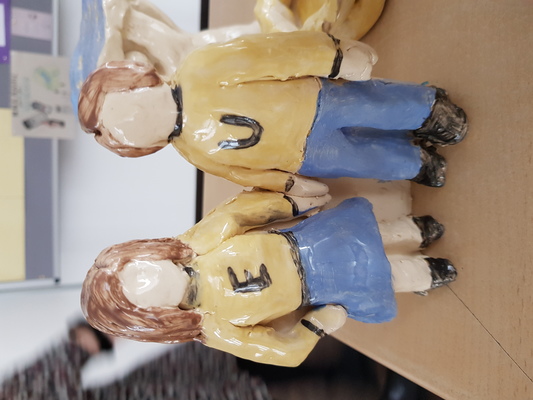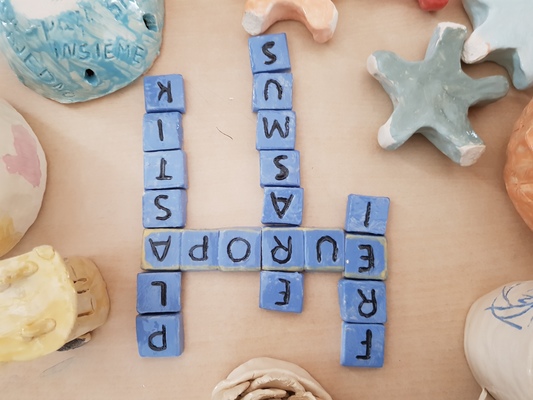Museum of Ceramics in Höhr-Grenzhausen
On 24th September 2020, we visited the Museum of Ceramics in Höhr-Grenzhausen. We took part in a guided tour led by a friendly and likeable woman who has studied ceramic before we were allowed to work with clay ourselves.
First, we went to see an art exhibit of Martin Neubeuert, who won a prize for his work in 2020. He formed faces out of ceramic and other materials. He used clay as art, as a form to express himself. But ceramic is more than this!
First of all, ceramic is a functional material. Clay consists mainly of clay-pieces, quartz and water. Clay-pieces with water can be kneaded and formed. The work of art is then dried. The water disappears out of the clay and the clay develops cohesiveness and rests rigidly. The formed clay comes into a heater. At the beginning, it warms up slowly to carry out the rest of moisture of the clay. When there is no water left in the clay, the heater warms up to 1200-1300°C. The atmosphere during firing is without oxygen. At the end of firing, damp salt is poured in the heater and thus salt glaze is created.
After this process of firing, ceramic has many important qualities: It is rock-hard, waterproof, resistant and acid-resistant so it can be used, for example, in pharmacies, as steins, as pots for keeping sauerkraut or meat, and in the past ceramics were even used as chamber pots.
But also now, ceramic is an important material: Pipes of sewerage system are made out of ceramic because they are even more acid-resistant than plastic.
Another facet of ceramic is a technical one. For example, brake discs are made of ceramic because it can stand high temperatures and repeated cycles of heating and cooling down, it is wear-resistant and light. Moreover, ceramic can be used to insulate against electrical currents but it can also conduct heat very well. Just have a look at your fuse box at home and think of the last time you prepared lasagna in an oven-proof dish! In the medical field, ceramic is established for creating hip joints. Hip joints out of ceramic are harder and they rub themselves off less. A disadvantage is that they break more easily.
After we learned so much about ceramic, we were allowed to work with clay ourselves. Our teachers chose “Europe” as subject. We formed stars, which hold each other’s prongs, scrabble pieces which form words like “plastic”, “peace” or “Erasmus” and a tree which grows in a circle with stars. It was much fun to knead and form this damp material in our hands. Even if we were very unsure at the beginning, at the end, we all have created unique ceramics who fit to the subject “Europe”.
We used ceramic as art but we also got to known about the many qualities which makes ceramic a unique and important material and a real alternative for plastic.
